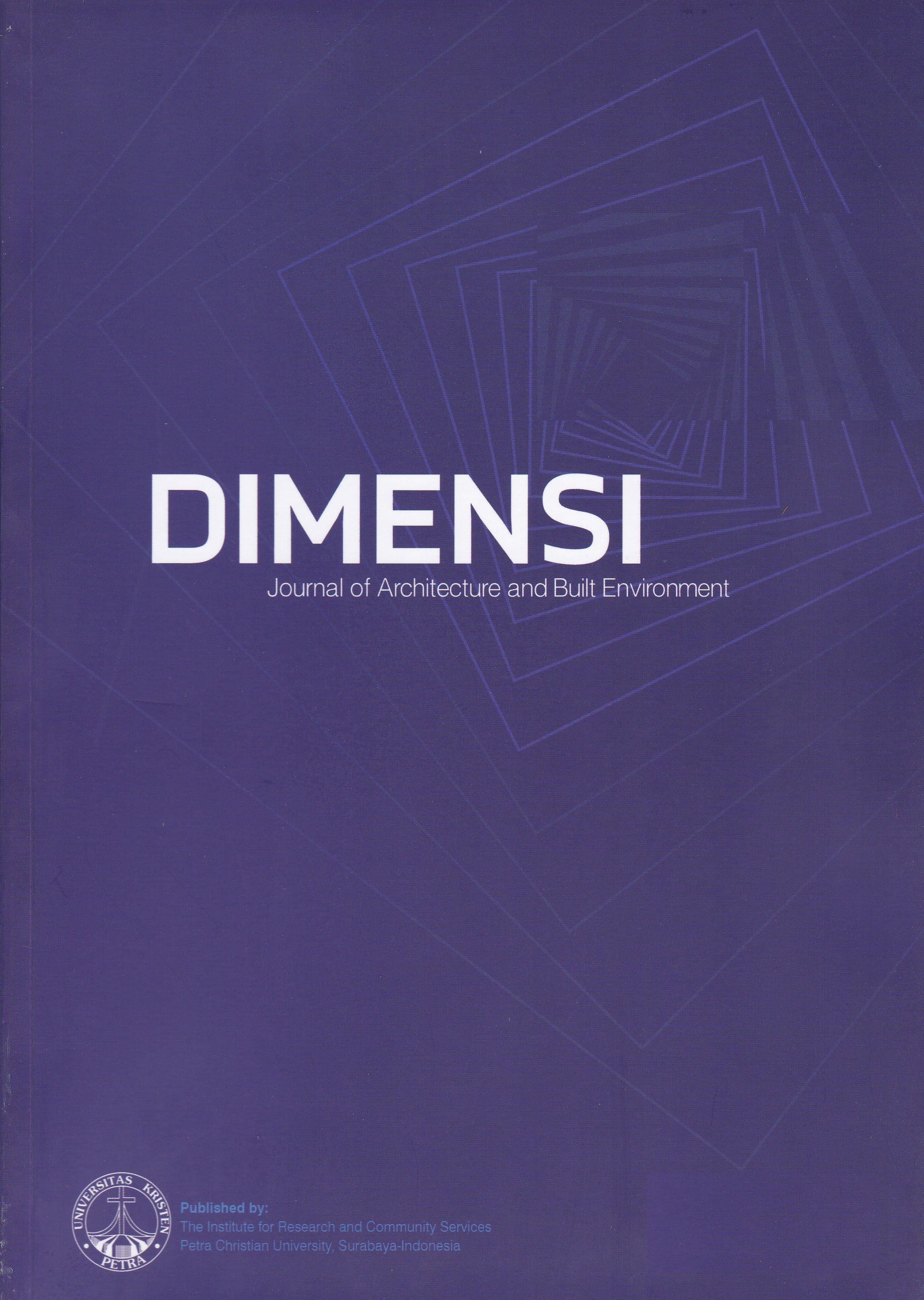PROTECTING BAMBOO COLUMN FROM HUMIDITY WITH POROUS PEDESTAL FOUNDATION
DOI:
https://doi.org/10.9744/dimensi.46.2.87-92Keywords:
Bamboo columns, concrete foundation, hollow pedestalAbstract
Bamboo has been used for a long time as a material for simple to complex structures. Many advantages of bamboo as a building material makes it suitable for buildings in disaster-prone areas. Bamboo is however prone to humidity, which could cause fungi and moss to emerge and endanger the building structure. Pedestal foundation made of concrete or stone is often used to reduce this risk as for its action as a barrier of direct contact between soil and bamboo. Nevertheless, water from damp soil or rainwater can still penetrate the foundation by capillary transmission through the foundation’s pores. This research proposed a hollow pedestal foundation model with larger pores and compared its ability to reduce moisture on bamboo columns to an ordinary pedestal foundation. The case study is a temporary post-disaster housing project of 13 houses in Muntilan, Central Java, Indonesia, which was built on an active rice field. Visual examination showed that after 5 years of occupancy, bamboo houses built on hollow pedestal foundations still firmly stood without apparent attacks of fungi or overgrowing mold, whereas the moisture measurement showed that the usage of hollow pedestal foundation could reduce the humidity level in the bamboo column almost twice as fast compared to solid pedestal foundation.Downloads
References
Arnold, A. 1982. Rising Damp and Saline Minerals. Fourth International Congress on the Deterioration and Preservation of Stone Objects, Louisville. pp. 11-28.
Borelli, E. 1999. Porosity-Conservation of Architectural Heritage-Historic Structures and Materials, ARC Laboratory Handbook, ICCROM, Rome.
Budianto, A. Dodong. 1996. Wood Drying System. Yogyakarta: Kanisius. pp. 8.
Ching, F. D. K. 1975. Building Construction Illustrated. New York: Van Nostrand Reinhold Company.
Frick, H., Moediartianto. 2004. Science of Wooden Building Construction. Yogyakarta: Kanisius.
Ioannou, I., Andreou, A., Tsikouras, B., & Hatzipanagiotou, K. 2009. Application of the Sharp Front Model to Capillary Absorption in A Vuggy Limestone, Engineering Geology, 105, pp.20-23.
Mangunwijaya, Y.B. 1997. Introduction to Building Physics. Jakarta: Djambatan. pp. 29.
Smith, Robert C. 1973. Material of Construction. United States of America: McGraw-Hill.
Sudarwanto, B., Murtomo, B.A. 2012. Studi Struktur dan Konstruksi Bangunan Tradisional Rumah ‘Pencu’ di Kudus, Jurnal Lingkungan Binaan vol. 1, Ikatan Peneliti Lingkungan Binaan Indonesia, Bandung.
Suranto, Y. 2002. Pengawetan Kayu: Bahan dan Metode. Yogyakarta: Kanisius.
UPT Woodworking Center. 2012. Technical Assistance Module of Drying Wood. Department of Marine and Agriculture of Jakarta.
Downloads
Published
How to Cite
Issue
Section
License
Authors who publish with this journal agree to the following terms:
- Authors retain copyright and grant the journal right of first publication with the work simultaneously licensed under a Creative Commons Attribution License that allows others to share the work with an acknowledgement of the work's authorship and initial publication in this journal.
- Authors are able to enter into separate, additional contractual arrangements for the non-exclusive distribution of the journal's published version of the work (e.g., post it to an institutional repository or publish it in a book), with an acknowledgement of its initial publication in this journal.
- Authors are permitted and encouraged to post their work online (e.g., in institutional repositories or on their website) prior to and during the submission process, as it can lead to productive exchanges, as well as earlier and greater citation of published work (See The Effect of Open Access).



















